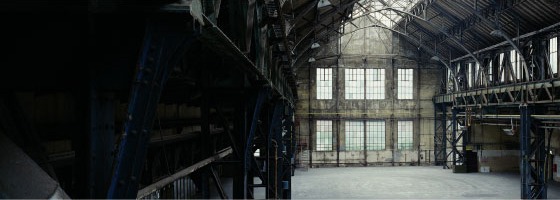
Jahrhunderthalle Bochum
Productions
CENTURY OF SONG – PATTI SMITH & FRIENDS
CENTURY OF SONG – THE INCREDIBLE COUNTRY NIGHT
CENTURY OF SONG – THE WILD GOSPEL NIGHT
THE DEPTH OF SPACE
RUHRCOLLECTION
SCHUMANN, SCHUBERT AND THE SNOW
THE ROMANTIC SCHOOL
UN VIAGGIO NEL BAROCCO ITALIANO
The story of Bochum's Jahrhunderthalle begins in the year 1903, when the monumental steel structure was erected on the site of the Bochumer Verein für Bergbau und Guss-Stahlfabrikation, between the works railway and the blast furnace plant. Its design had caused a sensation the previous year when it was presented at the trade and industry exhibition in Düsseldorf. Supplemented by the addition of a massive brick wall, it was to serve for over sixty years as the central gas power plant at the heart of the Bochum production site, supplying energy for the coal and steelworks as well as the ancillary plants.
The designs for the exhibition and the final construction were developed by the works' own architects. What was new was the fact the building's structure was supported not by the then usual framework of beams and girders but rather by steel arches reaching down to ground level. Both in form and decoration, the structure was reminiscent of cathedral architecture, a conscious attempt to evoke a similarly celebratory atmosphere.
When demand for steel rose in the years preceding the First World War, the hall was extended eastwards by a transverse wing and westwards by the addition of an annexe. Threeboiler houses, a gas blasting hall and several more extensions were to follow, bringing the main hall to the size it has today – 158 metres length, 34 metres breadth and 21 metres height. In its heyday the workforce came to number some 16,500 workers.
The last blast furnace at the Bochumsite was shut down at the end of the 1960's. The now redundant machines of the central gas power plant were dismantled. Krupp Stahl then used the hall as warehousing and workshop space until the beginning of 1991. In 1988 the state development corporation of North Rhine-Westphalia (LEG) acquired the property.
From February 2002, the Jahrhunderthalle was redeveloped according to plans by Düsseldorf architects Petzinka Pink, who created an imposing festival hall. The building's unique interior has been left almost unaltered. A system of curtains allows the hall's close to 10,000 m2 to be subdivided into three smaller spaces of differing size. A two-storey foyer was erected at the southern end of the hall as well as a six-storey building for dressing rooms and other space for artists. A century after being built as a gas power plant, the Jahrhunderthalle was inaugurated as an "assembly hall for art" when, on 30 April 2003, the RuhrTriennale's founder Gerard Mortier opened the festival's second season with Patrice Chéreau's production of Racine's Phèdre. The Jahrhunderthalle became an instant success, drawing crowds ever since and lauded by the international press as one of Europe's most impressive and innovative cultural venues.
Adress:
Gahlensche Straße 15
44793 Bochum
